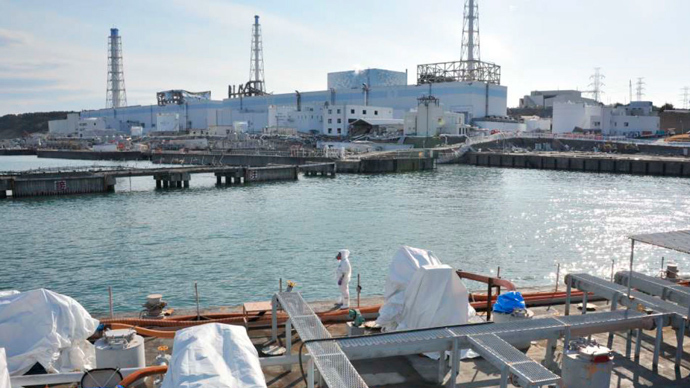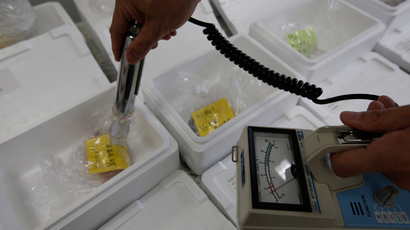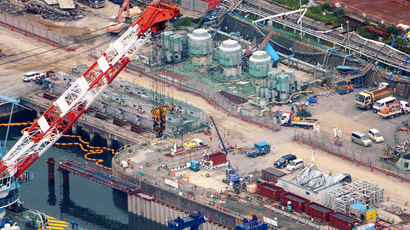Radiation levels in Fukushima bay highest since measurements began - reports

Readings of tritium in seawater taken from the bay near the crippled Fukushima nuclear plant has shown 4700 becquerels per liter, a TEPCO report stated, according to Nikkei newspaper. It marks the highest tritium level in the measurement history.
Follow
RT's LIVE UPDATES on the Fukushima leak emergency
Tokyo Electric Power Company (TEPCO) has detected the highest radiation level in seawater collected in the harbor of the crippled nuclear plant in the past 15 days, Nikkei reports.
TEPCO said the highest radiation level was detected near reactor 1. Previous measurements showed tritium levels at 3800 becquerels per liter near reactor 1, and 2600 becquerels per liter near reactor 2. The concentration of tritium in the harbor’s seawater has been continuously rising since May, according to Nikkei.
Tritium is a radioactive isotope of hydrogen which is produced by nuclear reactors. It is potentially dangerous if inhaled or ingested. The legal limits for Tritium in terms of becquerels per liter vary from country to country. The World Health Organization has a limit of 10,000 Bq/l, but the European Union’s limit is much lower, at 150 Bq/l.
Also on Monday, a leak of highly contaminated water was
discovered from a drain valve of a tank dike located on the
premises of the nuclear plant, according to Fukushima’s operator
responsible for the clean-up.
The level of radiation at the site was estimated at 100
millisieverts per hour, while the safe level of radiation is 1-13
millisieverts per year, according to ITAR-TASS news agency.
The plant’s operator is currently investigating reasons for the
leak, TEPCO said in a statement.
Earlier, Tepco admitted
that an estimated 20 to 40 trillion becquerel’s of tritium may
have flowed into the Pacific Ocean since the nuclear disaster.
Three of the plant’s reactors suffered a nuclear meltdown in
March 2011 after a massive earthquake struck the area, triggering
a tsunami. The plant has been accumulating radioactive water ever
since, as groundwater passing through the premises becomes
contaminated.
Protective barriers installed to prevent the flow of toxic water
into the ocean have failed to do so. The level of contaminated water has
already risen to 60cm above the barriers, which has been a major
cause of the daily leak of toxic substances, TEPCO admitted.
Japan’s Ministry of Industry recently estimated that around
300 tons of contaminated groundwater has been
seeping into the Pacific Ocean on a daily basis. TEPCO has
promised to reinforce protective shields to keep radioactive
leaks at bay.














